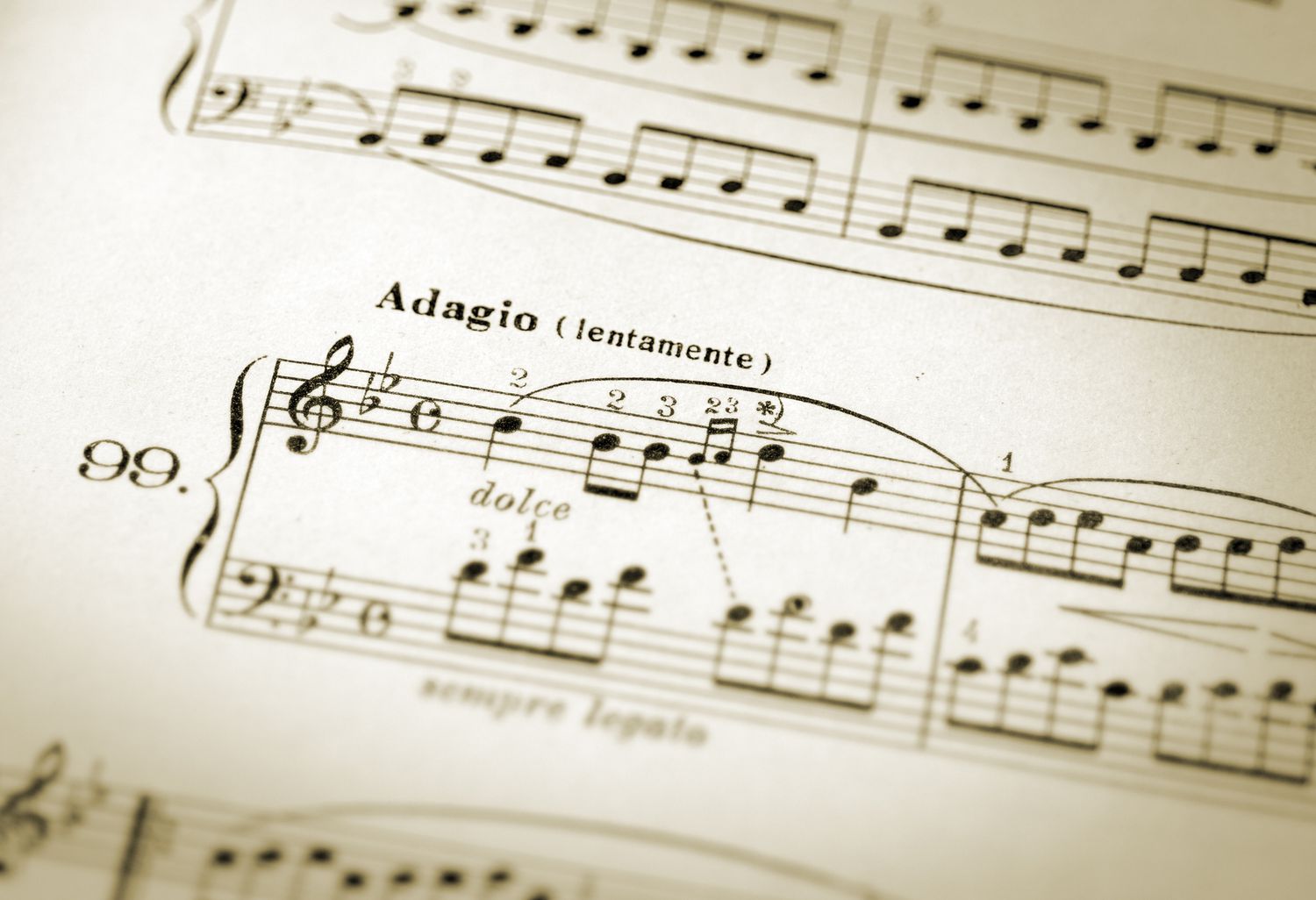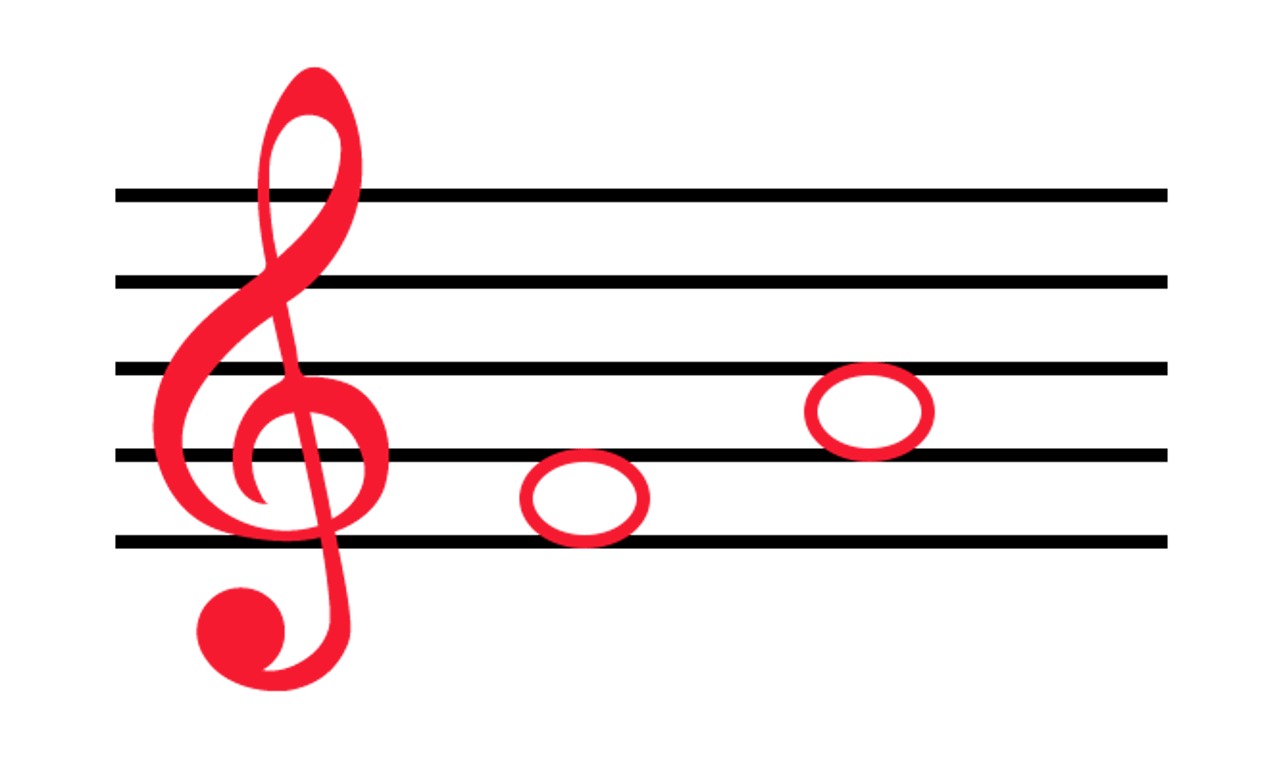Home>Production & Technology>Sheet Music>What Do The Numbers On Sheet Music Mean


Sheet Music
What Do The Numbers On Sheet Music Mean
Modified: January 22, 2024
Discover the meaning behind the numbers on sheet music and how they contribute to creating beautiful melodies. Explore the world of sheet music and uncover its secrets.
(Many of the links in this article redirect to a specific reviewed product. Your purchase of these products through affiliate links helps to generate commission for AudioLover.com, at no extra cost. Learn more)
Table of Contents
Introduction
Sheet music is a written language that allows musicians to interpret and perform a piece of music. It serves as a roadmap for musicians, providing them with essential information about the musical composition. Whether you’re a seasoned musician or just starting your musical journey, understanding the numbers on sheet music can be crucial in decoding the music and delivering a stellar performance.
Musical notation has evolved over centuries to represent various elements of music, including pitch, rhythm, dynamics, and articulations. The numbers on sheet music play a crucial role in conveying these elements to musicians. By understanding the significance of these numbers, you can decipher the intentions of the composer and bring the music to life.
In this article, we’ll explore the basic elements of sheet music and delve into the meaning behind the numbers you’ll encounter. From the staff to clefs, notes and rests to time signatures, key signatures to dynamics, we’ll cover it all. Whether you’re a pianist, guitarist, vocalist, or any other musician, this guide will equip you with the knowledge to navigate sheet music with confidence.
So, let’s dive in and uncover the mysteries behind the numbers on sheet music!
Musical Notation and Sheet Music
Musical notation is a system of symbols and markings used to represent musical sounds. It allows composers to communicate their musical ideas to performers and enables musicians to accurately reproduce the composition. Sheet music, also known as a score, is the written form of musical notation.
Sheet music consists of a series of symbols, numbers, and diagrams that convey information about the pitch, rhythm, dynamics, and other musical elements of a piece. It serves as a reference guide for musicians, providing them with specific instructions on how to perform the music.
One of the most widely used notations in Western music is the staff, a set of horizontal lines and spaces that represent different pitches. Notes are placed on the staff to indicate the pitch at which they should be played. The positioning of a note on the staff determines its pitch; notes higher on the staff are played at a higher pitch, while notes lower on the staff are played at a lower pitch.
In addition to the staff, sheet music utilizes various symbols and marks to indicate the duration of notes and pauses, the volume or intensity of the music, the speed at which it should be played, and other musical expressions. These symbols, along with the numeric notations, provide a comprehensive guide for musicians to interpret and perform the music.
To fully comprehend sheet music, it is essential to understand the meaning behind the numbers that appear throughout the score. These numbers convey vital information such as time signatures, key signatures, chord progressions, and more. By deciphering these numeric notations, musicians can unlock the intricacies of a composition and deliver a faithful rendition.
Now that we’ve explored the basics of musical notation and sheet music, let’s dive deeper into the significance of the numbers on sheet music. In the following sections, we’ll uncover the meaning of various numeric notations and how they contribute to the overall interpretation of a musical piece.
Understanding the Basics of Sheet Music
Before we delve into the specifics of the numbers on sheet music, it’s important to have a solid understanding of the basic components of sheet music. This knowledge will provide a strong foundation for interpreting and performing musical compositions.
The staff is the foundation of sheet music, consisting of five horizontal lines and four spaces. Each line and space represents a specific pitch, from low to high. Notes are placed on the staff to indicate the pitch at which they should be played.
To determine the pitch of a note, we use treble and bass clefs. The treble clef, also known as the G clef, is typically used for instruments like the piano, violin, and flute, which play higher pitches. The bass clef, or F clef, is often used for instruments like the double bass, cello, and bassoon, which produce lower pitches.
Notes are represented by different markings on the staff. The shape of the notehead and its positioning on the staff indicate the duration and pitch of the note. Rests, on the other hand, represent moments of silence in the music.
Time signatures are numerical notations that tell us how many beats are in each measure and which note value represents one beat. The top number of the time signature indicates the number of beats in a measure, while the bottom number denotes the type of note that receives one beat.
Key signatures are another crucial element of sheet music. They indicate the key or tonality of a piece and provide information about the arrangement of sharps or flats throughout the composition. Key signatures enable musicians to navigate through different tonalities and understand the harmonic structure of a piece.
Dynamics and articulations are markings that specify the volume and expression of the music. They guide musicians in executing soft or loud passages, crescendos, decrescendos, staccato notes, legato phrases, and more. These markings add depth and emotion to the music, enhancing its overall interpretation.
Tempo markings indicate the speed at which a piece should be played. Common tempo markings include allegro (fast), adagio (slow), and moderato (moderate). These markings help musicians maintain a consistent tempo throughout the performance and capture the intended mood of the composition.
Repeat signs and endings are used to indicate recurring sections in a piece. They direct musicians to repeat certain sections or skip to specific endings, ensuring that the structure of the composition is adhered to.
Chords and harmony play an essential role in sheet music, particularly for accompaniment and ensemble playing. Chord symbols provide a shorthand notation for the harmony, allowing musicians to play chords or improvise within a given framework.
Transposition is a technique that involves shifting a musical composition to a different key. It allows musicians to perform a piece in a different register or accommodate the vocal range of a singer. Transposition is often indicated by numeric notations or specific instructions within the sheet music.
By understanding these fundamental elements of sheet music, including the numbers that represent them, musicians can navigate the complexities of musical notation and deliver a polished performance. In the following sections, we’ll explore each of these components in more detail and uncover the meaning behind the numbers found in sheet music.
The Staff
The staff is a fundamental component of sheet music. It consists of five horizontal lines and four spaces, with each line and space representing a specific pitch. Musicians use the staff to notate and read musical notes accurately.
The five lines of the staff are numbered from the bottom to the top, with the bottom line representing the lowest pitch. The names of the lines, from bottom to top, are E, G, B, D, and F. The spaces between the lines are named after the letters that follow in alphabetical order, starting with F, then A, C, and E. This system allows musicians to identify and locate notes on the staff quickly.
To indicate pitches that extend beyond the five lines and four spaces, ledger lines are added above or below the staff. These short horizontal lines provide an extension of the staff and allow notes outside the standard range to be notated accurately.
In addition to indicating pitch, the staff also provides information about the duration of notes. The position of a note on the staff determines its pitch, and the shape of the notehead represents its duration. For example, a solid-filled notehead represents a quarter note, while a hollow notehead with a stem represents an eighth note.
A vertical line called a barline is used to divide the staff into measures or bars. Each measure contains a specific number of beats, depending on the time signature of the piece. Barlines help musicians keep track of the rhythmic structure and phrasing of the music.
Understanding how to read and interpret notes on the staff is fundamental to successfully navigating sheet music. By recognizing the position of notes and their duration, musicians can accurately reproduce the pitch and rhythm of a composition.
The staff is a versatile and universal tool in sheet music notation, used across various instruments and genres. Whether you’re a pianist, guitarist, violinist, or vocalist, a solid understanding of the staff is essential for effectively communicating and performing music.
In the upcoming sections, we’ll explore other essential elements of sheet music and the numbers associated with each. By gaining familiarity with these components, you’ll be equipped to decipher the meaning behind the numbers and unlock the musical intricacies of any composition.
Clefs
Clefs are symbols placed at the beginning of the staff to indicate the pitch range and position of notes. They help identify the position of specific notes on the staff, allowing musicians to quickly determine the correct pitches.
The two most common clefs used in sheet music are the treble clef and the bass clef. The treble clef, also known as the G clef, is characterized by a stylized letter “G” that curls around the second line of the staff. It is primarily used for instruments that play higher pitches, such as the piano’s right hand, violin, flute, and trumpet.
The treble clef positions the notes in such a way that the second line of the staff represents the pitch of G above middle C. The notes below and above the staff are easily recognized using the lines and spaces of the treble clef.
On the other hand, the bass clef, or F clef, is identified by two dots flanking the fourth line of the staff. This clef is predominantly used for instruments with lower registers, like the piano’s left hand, cello, double bass, and tuba.
The bass clef positions the notes so that the fourth line of the staff corresponds to the pitch of F below middle C. Musicians reading the bass clef can easily identify the notes below and above the staff using the lines and spaces of this clef.
In addition to the treble and bass clefs, other clefs such as the alto clef and tenor clef are used for specific instruments or vocal ranges. The alto clef is often used by viola players, while the tenor clef is utilized by instruments such as the trombone and bassoon.
When encountering sheet music, the clef symbol at the beginning of the staff provides important information about the note placement on the staff and the instrument or vocal range intended for performing the music. By familiarizing yourself with the different clefs and their corresponding note positions, you can effectively interpret and reproduce the music.
Now that we’ve explored the significance of clefs in sheet music, let’s move on to the next section, where we’ll uncover the meaning behind the notes and rests you’ll encounter in a musical score.
Notes and Rests
Notes and rests are essential symbols in sheet music that indicate both the pitch and duration of musical sounds. Understanding their notations is crucial for accurately interpreting and performing a piece.
Notes represent the pitches that musicians play or sing. They are represented by various symbols placed on the staff, with the position indicating the pitch and the shape revealing the duration. The most commonly used note symbols include whole notes, half notes, quarter notes, eighth notes, and sixteenth notes.
A whole note is a hollow oval shape without a stem, and it represents four beats or counts. A half note is similar, but it is filled with solid coloring and represents two beats or counts. A quarter note is a filled-in oval shape with a stem, representing one beat or count. Eighth notes have a flag attached to the stem and represent half a beat or count each, while sixteenth notes have two flags and represent a quarter of a beat or count each.
Rests, on the other hand, represent moments of silence in the music. They indicate a break in the sound and provide rhythmic spacing between the notes. Rests are also denoted by various symbols, each corresponding to a specific duration equivalent to its corresponding note.
Just like notes, rests have different durations. Whole rests, half rests, quarter rests, eighth rests, and sixteenth rests align with the durations of their respective note counterparts. For example, a whole rest represents a four-beat silence, while a quarter rest indicates a silence lasting one beat. The symbols for rests differ from notes in that they appear within or below the staff, depending on the rhythm of the music. This ensures that the appropriate duration of silence is observed.
Understanding the notation of notes and rests enables musicians to read and interpret the rhythmic aspect of a composition accurately. By combining notes and rests in different patterns and durations, composers create the rhythm and flow of a piece, giving it a unique character and feel.
As you encounter sheet music, paying attention to the notes and rests and their respective durations is essential for a polished performance. Familiarizing yourself with these symbols and their durations will allow you to execute the rhythmic patterns accurately and maintain the desired timing and phrasing.
Now that we have explored notes and rests, let’s move on to the next section, where we’ll unravel the significance of time signatures in sheet music.
Time Signatures
Time signatures are numerical notations found at the beginning of a piece of sheet music that indicate the organization of beats and rhythm within a musical composition. They provide vital information on how a piece is structured and help musicians maintain a consistent sense of timing and pulse.
A time signature consists of two numbers stacked vertically, usually written as a fraction. The top number represents the number of beats in each measure or bar, while the bottom number indicates the note value that receives one beat.
For example, in a common time or C time signature (4/4), the top number indicates that each measure contains four beats. The bottom number, which is typically a quarter note, signifies that a quarter note represents one beat. This means that there are four quarter notes or their equivalent in each bar.
Other common time signatures include 3/4 (known as triple meter), where there are three quarter notes per measure, and 6/8 (compound duple meter), where there are six eighth notes per measure. These time signatures contribute to the overall rhythmic feel and character of a piece.
In addition to the numerical representation, some time signatures are accompanied by specific symbols. For example, the common time signature (4/4) is often represented by the symbol “C” (cut time), and the compound duple meter (6/8) is represented by a dotted quarter note followed by an eighth note.
Time signatures play a crucial role in guiding musicians in terms of how they count and group the beats within a measure. By understanding the time signature, musicians can accurately interpret the rhythm and maintain a steady tempo throughout the piece.
It is important to note that while the time signature establishes the basic rhythmic structure, composers may introduce irregularities or changes in the rhythm through the use of syncopation, tempo variations, or time signature changes within the piece. These variations add interest and complexity to the music.
As you encounter different time signatures in sheet music, take the time to familiarize yourself with their meanings and implications. Being able to recognize and internalize the time signature will greatly assist you in interpreting and performing the piece accurately.
Now that we have explored the significance of time signatures, let’s delve into the world of key signatures in sheet music in the next section.
Key Signatures
Key signatures are notations found at the beginning of a musical composition, indicating the key or tonality of the piece. They provide valuable information about which notes are sharped (#) or flatted (♭) throughout the music, helping musicians navigate the specific tonal framework of the composition.
A key signature is represented by a series of sharps or flats placed on specific lines or spaces of the staff. These sharps or flats affect the corresponding notes throughout the piece, eliminating the need for individual accidentals to be placed before each occurrence of the note.
For example, a key signature with one sharp (♯) positioned on the fifth line of the staff indicates that all F notes are to be played as F sharp (F♯) throughout the piece. Similarly, a key signature with two sharps will have F♯ and C♯, and so on.
Key signatures can also be represented by flats (♭), indicating that certain notes are lowered by a half step. For instance, a key signature with one flat positioned on the fourth line of the staff denotes that all B notes are to be played as B flat (B♭).
By recognizing the key signature, musicians can identify the tonal center and comprehend the harmonic structure of the piece. It helps establish the tonal relationships between different chords, melodies, and progressions found throughout the music.
It’s important to note that key signatures can be major or minor, depending on whether the composition is in a major key or a minor key. Major key signatures tend to have a brighter or happier sound, while minor key signatures have a darker or more melancholic feel.
While key signatures establish a tonal framework, composers may incorporate accidentals within the piece. These accidentals, indicated by symbols such as sharps, flats, and naturals (♮), modify the pitch of a note and temporarily deviate from the key signature.
By understanding key signatures and their impact on the music, musicians can effectively interpret the melodic and harmonic elements of a composition. It allows for a deeper understanding of the intended tonalities and aids in the stylistic interpretation of the music.
Now that we have explored the significance of key signatures, let’s continue to unravel the importance of dynamics and articulations in sheet music.
Dynamics and Articulations
Dynamics and articulations are markings in sheet music that provide instructions on the volume, intensity, and expression of the music. They enhance the interpretation and performance of a piece, adding depth, emotion, and nuance to the music.
Dynamics refer to the volume or intensity of the music. They indicate whether a section should be played softly (piano) or loudly (forte) and everything in between. Common dynamic markings include pianissimo (very soft), mezzo piano (moderately soft), mezzo forte (moderately loud), and fortissimo (very loud). These markings help convey the desired mood and contrast within a composition.
Articulations, on the other hand, define the manner in which individual notes or phrases are played. They provide instructions on how to connect or detach notes, shaping the overall phrasing of the music. Common articulations include staccato (short and detached), legato (smooth and connected), marcato (strong and accented), and accent (emphasized attack on a note). These markings bring out the character and expression intended by the composer.
Additionally, other expressive symbols, such as crescendo (gradually getting louder) and decrescendo (gradually getting softer), guide musicians in shaping the dynamic contour of a musical phrase. These markings add a sense of contour and shape to the music, enhancing its emotional impact.
By following the dynamics and articulations indicated in the sheet music, musicians can bring out the intended expression and musicality of a composition. They contribute to the overall interpretation and communication of the composer’s artistic vision.
It’s important to note that dynamics and articulations are not fixed and can be subject to interpretation. They provide a starting point, but musicians often have the freedom to add their own personal touch and musical interpretation to enhance the performance.
As you encounter dynamics and articulations in sheet music, take the time to understand their meanings and experiment with different approaches to bring out the desired expression. This will help you create a nuanced and captivating performance that truly reflects the soul of the music.
Now that we have explored dynamics and articulations, let’s uncover the significance of tempo markings in sheet music in the next section.
Tempo Markings
Tempo markings in sheet music provide instructions on the speed or pace at which a musical composition should be performed. They convey the intended tempo, setting the overall mood and character of the piece.
Tempo markings are indicated by Italian words or symbols that describe the desired speed. Common tempo markings include allegro (fast and lively), adagio (slow and stately), moderato (moderate tempo), and presto (very fast). These markings give musicians a general idea of the desired speed, but they can be open to interpretation and may vary depending on the performer or the context of the music.
In addition to the Italian terms, tempo markings may include metronome markings, which provide an exact indication of the beats per minute (BPM). For example, a metronome marking of 120 BPM indicates that there are 120 beats per minute, giving a precise reference for the tempo.
Tempo markings play a significant role in music interpretation, as they guide musicians in maintaining a consistent pace and conveying the intended mood of the composition. They also help ensure a cohesive performance when playing with other musicians or ensembles.
However, tempo markings are not solely indicated at the beginning of a piece. In sheet music, you may also encounter tempo changes indicated by specific terms or symbols. These changes, known as tempo rubato, accelerando, ritardando, or fermata, instruct musicians to either speed up, slow down, or hold a note or phrase for a longer duration. These variations in tempo add nuance, spontaneity, and expressiveness to the music.
While it is important to adhere to the indicated tempo markings, musicians also have the flexibility to infuse their personal interpretation and musicality into the performance. This allows for artistic expression and responsiveness to the mood and emotions conveyed in the music.
As you encounter tempo markings in sheet music, take the time to internalize and understand their intended speed and mood. Experiment with different interpretations and find a tempo that best conveys the musical qualities of the composition.
Now that we have explored tempo markings, let’s move on to the next section, where we’ll uncover the importance of repeat signs and endings in sheet music.
Repeat Signs and Endings
Repeat signs and endings are symbols in sheet music that indicate recurring sections and provide instructions on how to navigate and structure a musical composition. They ensure that specific parts of a piece are repeated, maintaining the intended form and structure.
Repeat signs are represented by double barlines with dots placed before and after them. These signs indicate that the music should be repeated from the beginning or a specific point indicated by another repeat sign or a corresponding notation. It allows musicians to revisit a section of the music and provides a clear roadmap for the performance.
Repeat signs also often include additional instructions such as “D.S.” (Dal Segno), meaning to go back to a specific sign earlier in the score, or “D.C.” (Da Capo), meaning to go back to the beginning of the piece. These markings ensure that musicians follow the designated path and accurately reproduce the intended form of the composition.
In addition to repeat signs, sheet music may include numbered or labeled endings. These symbols, typically indicated with numbers enclosed in circles or brackets, guide musicians on how to navigate multiple endings within a repeated section. Each time the music reaches a repeat, the performer may choose to play a different ending, adding variety and interest to subsequent iterations of the section.
Repeat signs and endings are essential for maintaining structure, consistency, and coherence within a musical piece. By following these markings, musicians ensure that the intended form and arrangement of the composition are faithfully presented.
It’s important to pay close attention to repeat signs and endings while reading sheet music, as they provide crucial instructions on how to navigate and interpret the composition. By following these notations, musicians can effectively navigate through the repeated sections, understand where to make variations, and structure their performance accordingly.
Now, armed with the understanding of repeat signs and endings, let’s uncover the importance of chords and harmony in sheet music in the next section.
Chords and Harmony
Chords and harmony play a fundamental role in sheet music, contributing to the overall sound and structure of a musical composition. They provide the foundation upon which melodies and harmonies are built, creating a rich texture and supporting the emotional impact of the music.
A chord is a group of three or more notes played simultaneously. It consists of a root note and additional notes that create different harmonic relationships. Chords can be represented by notations such as letter names, numbers, or chord symbols.
One common type of chord notation is the use of Roman numerals to represent chords in relation to a key. For example, in the key of C major, the C major chord would be represented as “I,” the D minor chord as “ii,” and so on. This notational system allows musicians to easily transpose and understand chord progressions in different keys.
Harmony, on the other hand, refers to the combination of chords and the relationships between them. It encompasses the vertical aspects of music, focusing on how multiple notes and chords interact and complement each other. Harmony helps establish the tonal character and emotional impact of a composition.
Understanding chords and harmony is essential for accompaniment, improvisation, and ensemble playing. Chords provide a framework for musicians to follow while improvising melodies or playing accompanying parts. They guide performers in finding harmonic patterns and creating harmonic progression within a piece.
In addition, understanding harmony allows musicians to analyze and interpret the harmonic structure of a composition. By recognizing the relationships and progressions between chords, musicians can uncover the underlying structure and narrative of the music, adding depth and meaning to their performance.
Whether you’re a guitarist strumming chords, a pianist playing a chordal accompaniment, or a vocalist harmonizing with others, knowledge of chords and harmony will greatly enhance your ability to participate in collaborative music-making.
As you encounter chords and harmonic progressions in sheet music, take the time to understand the relationships between the chords and their role in shaping the overall harmony of the piece. Explore different voicings and inversions to bring out the desired colors and qualities of the chords.
Now that we have explored the significance of chords and harmony, let’s move on to the concept of transposition in the next section.
Transposition
Transposition is the process of shifting a musical composition from one key to another. It allows musicians to adapt a piece to a different pitch range or accommodate the vocal range of a singer. Transposition is a valuable skill for pianists, guitarists, and other musicians playing instruments that are not in concert pitch.
By transposing a piece, the relationship between the notes and chords remains consistent, but the overall pitch changes. This means that all the intervals between the notes are maintained in the new key. For example, if a piece is transposed up a whole step, every note in the piece will be shifted up by two half steps.
Transposition can be done manually by mentally shifting each note by the desired interval, but it can also be facilitated by using notation software or transposing instruments that automatically transpose the music to the desired key.
Transposition is particularly useful when playing with other musicians or in different musical contexts. It allows musicians to perform a piece in a key that suits their instrument or vocal range, or to accompany another musician playing in a different key.
There are also practical reasons for transposing, such as accommodating a singer’s range or making a piece more accessible for a specific instrument. Transposing can also create a different tonal color, adding variety and interest to a well-known piece.
When transposing, it is important to understand the relationship between the original and transposed keys. By having a solid understanding of the music theory behind transposition, musicians can accurately and confidently adapt the piece to a new key.
Transposition is a valuable skill for any musician, as it allows for flexibility and adaptability in performance. By being able to transpose music, musicians can expand their repertoire, collaborate with diverse musicians, and accommodate different musical situations with ease.
Now that we have explored the concept of transposition, let’s wrap up our discussion.
Conclusion
Sheet music is a vital language for musicians, providing them with a comprehensive guide to interpret and perform a musical composition. Understanding the numbers and symbols on sheet music is essential for decoding the pitch, rhythm, dynamics, and expression intended by the composer.
In this article, we have explored the key components of sheet music, from the staff and clefs to notes and rests, time signatures, key signatures, dynamics and articulations, tempo markings, repeat signs and endings, chords and harmony, and transposition.
By grasping the fundamentals of sheet music notation and the significance of these elements, musicians can navigate through a piece with confidence, accurately interpret the intentions of the composer, and bring the music to life.
Furthermore, by infusing their own musicality and interpretation into their performance, musicians can add a personal touch, breathing life into the music and captivating the listeners.
Remember, sheet music is not just a set of numbers and symbols; it is a roadmap that invites musicians to embark on a journey of expression, emotion, and artistic interpretation. So embrace the language of sheet music, explore its nuances, and let your musicality shine through as you bring the magic of the written music to life.











